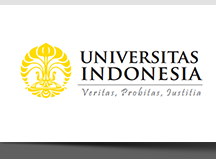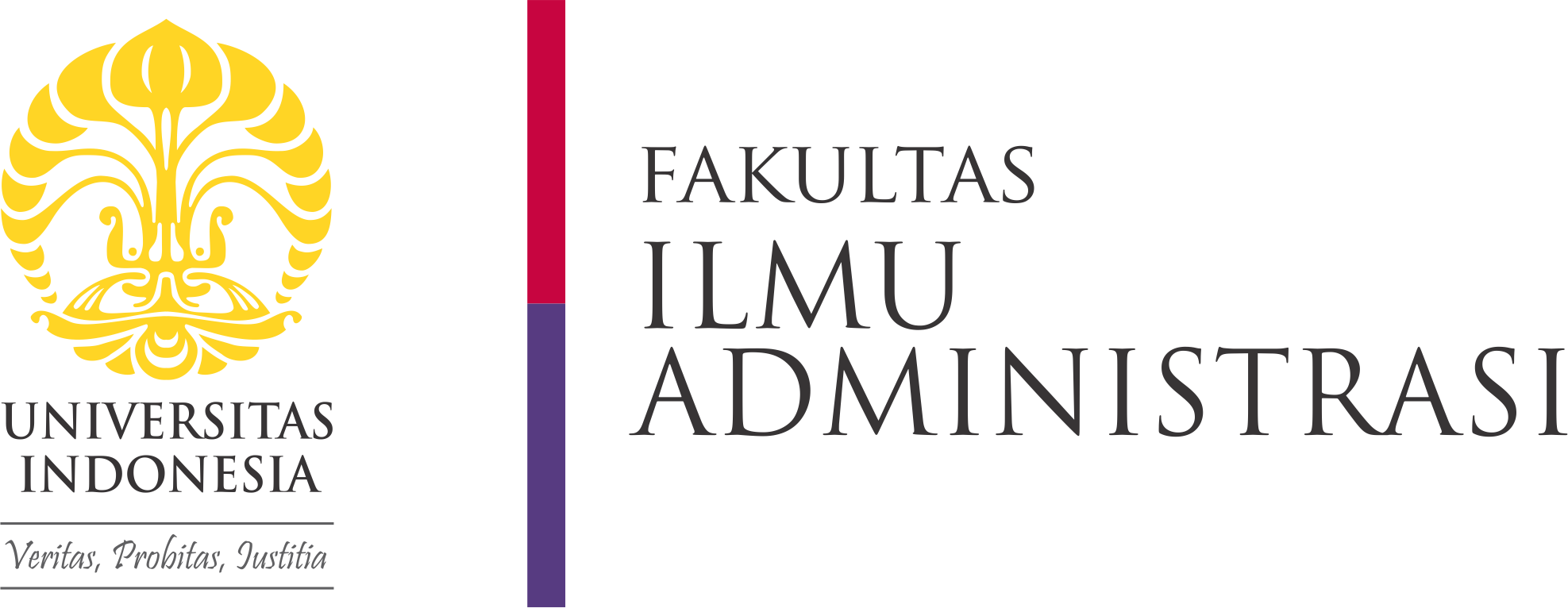Creative Commons License

This work is licensed under a Creative Commons Attribution-Share Alike 4.0 International License.
Abstract
This study investigates the critical factors influencing the initiation of Public Sector Innovation (PSI) in Indonesia, focusing on governance and service-type innovations within two local government settings: Yogyakarta and Kupang. The methodology employed was a qualitative approach with multiple case studies complemented by the critical incident technique for data analysis. The data were gathered from 23 informants who played significant roles in the early stages of the innovation process at the local government level. The findings reveal that in Yogyakarta, the successful initiation of innovations such as Sego Segawe and YES 119 was primarily driven by robust political leadership, extensive external networks, and the availability of resources. In contrast, the innovations in Kupang, such as Kupang Green and Clean (KGC) and Brigade Kupang Sehat (BKS), were heavily influenced by strong collaboration with external stakeholders and the adaptability of innovations to local conditions. A comparative analysis of the two cases underscores that while both regions benefited from political support and external collaboration, the specific local context and available resources played a crucial role in shaping the innovation process. The novelty of this research lies in its cross-regional comparison, which provides new insights into how local contexts in different geographic regions of Indonesia influence the initiation and success of public sector innovations. These insights contribute to the broader PSI literature by highlighting the importance of contextual factors in successfully initiating public sector innovations in developing countries.
References
Agolla, J. E., & Lill, J. B. Van. (2013). Public Sector Innovation Drivers: A Process Model. Journal of Social Sciences, 34(2), 165–176. https://doi.org/10.1080/09718923.2013.11893128
Altshuler and Behn, R. . (2010). Innovation in American Government: Challenges, Opportunities, and Dilemmas. Brookings Institution Press.
Arkorful, V. E., Shuliang, Z., Muhideen, S., Basiru, I., & Hammond, A. (2020). An Empirical Investigation of Health Practitioners Technology Adoption: The Mediating Role of Electronic Health. International Journal of Public Administration, 43(12), 1013–1028. https://doi.org/10.1080/01900692.2019.1664569
Bankins, S., Denness, B., Kriz, A., & Molloy, C. (2017). Innovation Agents in the Public Sector: Applying Champion and Promotor Theory to Explore Innovation in the Australian Public Service. Australian Journal of Public Administration, 76(1), 122–137. https://doi.org/10.1111/1467-8500.12198
Berry, F. S. (1994). Innovation in Public Management : The Adoption of Strategic Planning Author. 54(4), 322–330.
Borins, S. (2000). What border? Public management innovation in the United States and Canada. Journal of Policy Analysis and Management, 19(1), 46–74. https://doi.org/10.1002/(SICI)1520-6688(200024)19:13.0.CO;2-Z
Buchheim, L., Krieger, A., & Arndt, S. (2020). Innovation types in public sector organizations: a systematic review of the literature. Management Review Quarterly, 70(4). https://doi.org/10.1007/s11301-019-00174-5
Bungin, B. (2021). Post - Qualitative Social Research Methods (2nd ed.). Kencana.
Collm, A., & Schedler, K. (2014). Strategies for Introducing Organizational Innovation to Public Service Organizations. Public Management Review, 16(1), 140–161. https://doi.org/10.1080/14719037.2013.822528
Creswell, J. W. (2018). Reserch Design Quslitative , Quantitative and Mixed methods Approaches. In Sage (Issue 9). https://doi.org/10.1017/CBO9781107415324.004
Damanpour, F., & Aravind, D. (2012). Managerial Innovation: Conceptions, Processes, and Antecedents. Management and Organization Review, 8(2), 423–454. https://doi.org/10.1111/j.1740-8784.2011.00233.x
Damanpour, F., & Schneider, M. (2006). Phases of the adoption of innovation in organizations: Effects of environment, organization and top managers. British Journal of Management, 17(3), 215–236. https://doi.org/10.1111/j.1467-8551.2006.00498.x
De Vries, H., Bekkers, V., & Tummers, L. (2016). Innovation in the public sector: A systematic review and future research agenda. Public Administration, 94(1), 146–166. https://doi.org/10.1111/padm.12209
de Vries, H., Tummers, L., & Bekkers, V. (2018a). A stakeholder perspective on public sector innovation: why position matters. International Review of Administrative Sciences, 84(2), 269–287. https://doi.org/10.1177/0020852317715513
de Vries, H., Tummers, L., & Bekkers, V. (2018b). The Diffusion and Adoption of Public Sector Innovations: A Meta-Synthesis of the Literature. Perspectives on Public Management and Governance, 1(3), 159–176. https://doi.org/10.1093/ppmgov/gvy001
Ek Österberg, E., Qvist, M., Österberg, E. E., & Qvist, M. (2020). Public Sector Innovation as Governance Reform: A Comparative Analysis of Competitive and Collaborative Strategies in the Swedish Transport Sector. Administration and Society, 52(2), 292–318. https://doi.org/10.1177/0095399718789077
Hartley, J., & Rashman, L. (2018). Innovation and inter-organizational learning in the context of public service reform. International Review of Administrative Sciences, 84(2), 231–248. https://doi.org/10.1177/0020852318762309
Hasanefendic, S., Birkholz, J. M., Horta, H., & van der Sijde, P. (2017). Individuals in action: bringing about innovation in higher education. European Journal of Higher Education, 7(2), 101–119. https://doi.org/10.1080/21568235.2017.1296367
Jans, W., Need, A., Gerven, M. Van, Denters, B., Van Gerven, M., & Denters, B. (2018). Youth Policy Innovation in the Netherlands: The Realization of Centers for Youth and Families by Municipalities. International Public Management Journal, 21(3), 346–368. https://doi.org/10.1080/10967494.2018.1428703
Korac, S., Saliterer, I., & Walker, R. M. (2017). Analysing the environmental antecedents of innovation adoption among politicians and public managers. Public Management Review, 19(4), 566–587. https://doi.org/10.1080/14719037.2016.1200119
Kusumasari, B., Pramusinto, A., Santoso, A. D., & Fathin, C. A. (2019). What shapes public sector innovation? Public Policy and Administration, 18(4), 430–446. https://doi.org/10.13165/VPA-19-18-4-05
Lægreid, P., Roness, P. G., & Verhoest, K. (2011). Explaining the innovative culture and activities of state agencies. Organization Studies, 32(10), 1321–1347. https://doi.org/10.1177/0170840611416744
Lewis, J. M., Ricard, L. M., & Klijn, E. H. (2018). How innovation drivers, networking and leadership shape public sector innovation capacity. International Review of Administrative Sciences, 84(2), 288–307. https://doi.org/10.1177/0020852317694085
Likhtin, A. A. (2021). Problems of Contemporary Public Administration: Content Analysis of Scientific Publications. Administrative Consulting, 5. https://doi.org/10.22394/1726-1139-2021-5-78-86
Lindsay, C., Findlay, P., McQuarrie, J., Bennie, M., Corcoran, E. D., & Van Der Meer, R. (2018). Collaborative Innovation, New Technologies, and Work Redesign. Public Administration Review, 78(2), 251–260. https://doi.org/10.1111/puar.12843
Maranto, R., & Wolf, P. J. (2013). Cops, Teachers, and the Art of the Impossible: Explaining the Lack of Diffusion of Innovations That Make Impossible Jobs Possible. Public Administration Review, 73(2), 230–240. https://doi.org/10.1111/j.1540-6210.2012.02626.x
Maroulis, S., & Wilensky, U. (2015). Social and Task Interdependencies in the Street-Level Implementation of Innovation. Journal of Public Administration Research and Theory, 25(3), 721–750. https://doi.org/10.1093/jopart/mut084
Meijer, A. J. (2014). From Hero-Innovators to Distributed Heroism: An in-depth analysis of the role of individuals in public sector innovation. Public Management Review, 16(2), 199–216. https://doi.org/10.1080/14719037.2013.806575
Moldogaziev, T. T., & Resh, W. G. (2016). A Systems Theory Approach to Innovation Implementation: Why Organizational Location Matters. Journal of Public Administration Research and Theory, 26(4), 677–692. https://doi.org/10.1093/jopart/muv047
Moore, M., & Hartley, J. (2008). Innovations in governance. Public Management Review, 10(1), 3–20. https://doi.org/10.1080/14719030701763161
Nur, M. I. (2023). Mal Pelayanan Publik Sebagai Praktik Inovasi Pemerintah Daerah Di Wilayah Provinsi Jawa Barat. Sawala : Jurnal Administrasi Negara, 11(1). https://doi.org/10.30656/sawala.v11i1.6601
Orazi, D. C., Turrini, A., & Valotti, G. (2013). Public sector leadership: New perspectives for research and practice. International Review of Administrative Sciences, 79(3), 486–504. https://doi.org/10.1177/0020852313489945
Pasha, O. (2019). Does Substandard Performance Encourage Innovation Adoption? American Review of Public Administration, 49(5), 572–584. https://doi.org/10.1177/0275074018804559
Pradana, I. P. Y. B. (2022). Sustainabilitas Inovasi Sektor Publik Di Indonesia (Studi Kasus Inovasi di Pemerintah Kota Yogyakarta Dan Kota Kupang). Doctoral Thesis, Universitas Gadjah Masa.
Pradana, I. P. Y. B., Kumorotomo, W., & Susanto, E. (2023). The institutionalization of public innovation: Evidence from Indonesia. Administration & Society, 1–26. https://doi.org/DOI: 10.1177/00953997231151438
Pradana, I. P. Y. B., Susanto, E., & Kumorotomo, W. (2022). Bibliometric Analysis of Public Sector Innovation. Jurnal Ilmu Sosial Dan Ilmu Politik, 25(3), 297–315. https://doi.org/https://doi.org/10.22146/jsp.69862
Pratama, A. B. (2019). The landscape of public service innovation in Indonesia. Innovation & Management Review, 17(1), 25–40. https://doi.org/10.1108/inmr-11-2018-0080
Ricard, L. M., Klijn, E. H., Lewis, J. M., & Ysa, T. (2017). Assessing public leadership styles for innovation: a comparison of Copenhagen, Rotterdam and Barcelona. Public Management Review, 19(2), 134–156. https://doi.org/10.1080/14719037.2016.1148192
Rogers, E. M. (2003). Diffusion of innovations (5th ed.), [B] New York: Free Press. In Diffusion of innovations (5th ed.). [B] New York: Free Press.
Sabharwal, M., Levine, H., & D’Agostino, M. (2018). A Conceptual Content Analysis of 75 Years of Diversity Research in Public Administration. Review of Public Personnel Administration, 38(2). https://doi.org/10.1177/0734371X16671368
Salge, T. O., & Vera, A. (2012). Benefiting from Public Sector Innovation: The Moderating Role of Customer and Learning Orientation. Public Administration Review, 72(4), 550–559. https://doi.org/10.1111/j.1540-6210.2012.02529.x
Saputro, A., & Martono, B. (2022). Inovasi Reformasi Birokrasi Pemerintah Provinsi Jawa Tengah Dalam Menekan Kkn Di Lingkungan Pemerintah Provinsi Jawa Tengah. Journal of Research and …, 1(1).
Simmons, R., & Brennan, C. (2017). User voice and complaints as drivers of innovation in public services. Public Management Review, 19(8), 1085–1104. https://doi.org/10.1080/14719037.2016.1257061
Sjuchro, D. W., & Andung, P. A. (2020). Rural community in Indonesia in their fight for governance transparency through radio. Utopia y Praxis Latinoamericana, 25(Extra10). https://doi.org/10.5281/zenodo.4155168
Susanto, E. (2020). Does love of money matter for innovative work behavior in public sector organizations? Evidence from Indonesia. International Journal of Public Sector Management, 34(1), 71–85. https://doi.org/10.1108/IJPSM-01-2020-0028
Syaidah, S. (2020). Inovasi Layanan Publik Pusat Informasi Dan Koordinasi Jawa Barat (Pikobar) Saat Pandemi Covid-19. Dialektika, 7(2).
Torfing, J., Cristofoli, D., Gloor, P. A., Meijer, A. J., & Trivellato, B. (2020). Taming the snake in paradise: combining institutional design and leadership to enhance collaborative innovation. Policy and Society, 00(00), 1–25. https://doi.org/10.1080/14494035.2020.1794749
van Acker, W., Wynen, J., & Op de Beeck, S. (2018). Illuminating the Gender Divide in Public Sector Innovation: Evidence From the Australian Public Service. Public Personnel Management, 47(2), 175–194. https://doi.org/10.1177/0091026017747299
van der Wal, Z., & Demircioglu, M. A. (2020). Public sector innovation in the Asia-pacific trends, challenges, and opportunities. Australian Journal of Public Administration, 79(3), 271–278. https://doi.org/10.1111/1467-8500.12435
Wagner, B., & Fain, N. (2018). Regulatory influences on innovation in the public sector: the role of regulatory regimes. Public Management Review, 20(8), 1205–1227. https://doi.org/10.1080/14719037.2017.1350282
Walker, R. M. (2006). Innovation type and diffusion: An empirical analysis of local government. Public Administration, 84(2), 311–335. https://doi.org/10.1111/j.1467-9299.2006.00004.x
Walker, R. M. (2014). Internal and External Antecedents of Process Innovation: A review and extension. Public Management Review, 16(1), 21–44. https://doi.org/10.1080/14719037.2013.771698
Walker, R. M., Avellaneda, C. N. &, & Berry, F. S. (2011). Exploring the diffusion of innovation among high and low innovative localities: A test of the Berry and Berry model. Public Management Review, 13(1), 95–125. https://doi.org/10.1080/14719037.2010.501616
Williams, M. J., & Yecalo-Tecle, L. (2020). Innovation, voice, and hierarchy in the public sector: Evidence from Ghana’s civil service. Governance, 33(4), 789–807. https://doi.org/10.1111/gove.12472
World Bank. (2022). Indonesia overview. https://www.worldbank.org/en/country/indonesia/overview
Wynen, J., & Verhoest, K. (2015). Do NPM-Type Reforms Lead to a Cultural Revolution Within Public Sector Organizations? Public Management Review, 17(3), 356–379. https://doi.org/10.1080/14719037.2013.841459
Wynen, J., Verhoest, K., & Kleizen, B. (2017). More reforms, less innovation? The impact of structural reform histories on innovation-oriented cultures in public organizations. Public Management Review, 19(8), 1142–1164. https://doi.org/10.1080/14719037.2016.1266021
Wynen, J., Verhoest, K., Ongaro, E., & van Thiel, S. (2014). Innovation-Oriented Culture in the Public Sector: Do managerial autonomy and result control lead to innovation? Public Management Review, 16(1), 45–66. https://doi.org/10.1080/14719037.2013.790273
Yin, R. K. (2017). Designing Case Studies. In Case Study Research and Applications: Design and Methods (Sixth Edit). SAGE Publications Inc.
Yun, C. (2020). Early Innovation Adoption: Effects of Performance-Based Motivation and Organizational Characteristics. Public Performance and Management Review, 43(4), 790–817. https://doi.org/10.1080/15309576.2019.1666725
First Page
69
Last Page
82
Recommended Citation
Pradana, I Putu Yoga Bumi
(2025)
"Critical Drivers in Public Sector Innovation: Governance and Service Insights from Yogyakarta and Kupang,"
BISNIS & BIROKRASI: Jurnal Ilmu Administrasi dan Organisasi: Vol. 32:
No.
2, Article 1.
DOI: 10.20476/jbb.v38i2.1495
Available at:
https://scholarhub.ui.ac.id/jbb/vol32/iss2/1
Included in
Human Resources Management Commons, Public Affairs, Public Policy and Public Administration Commons






